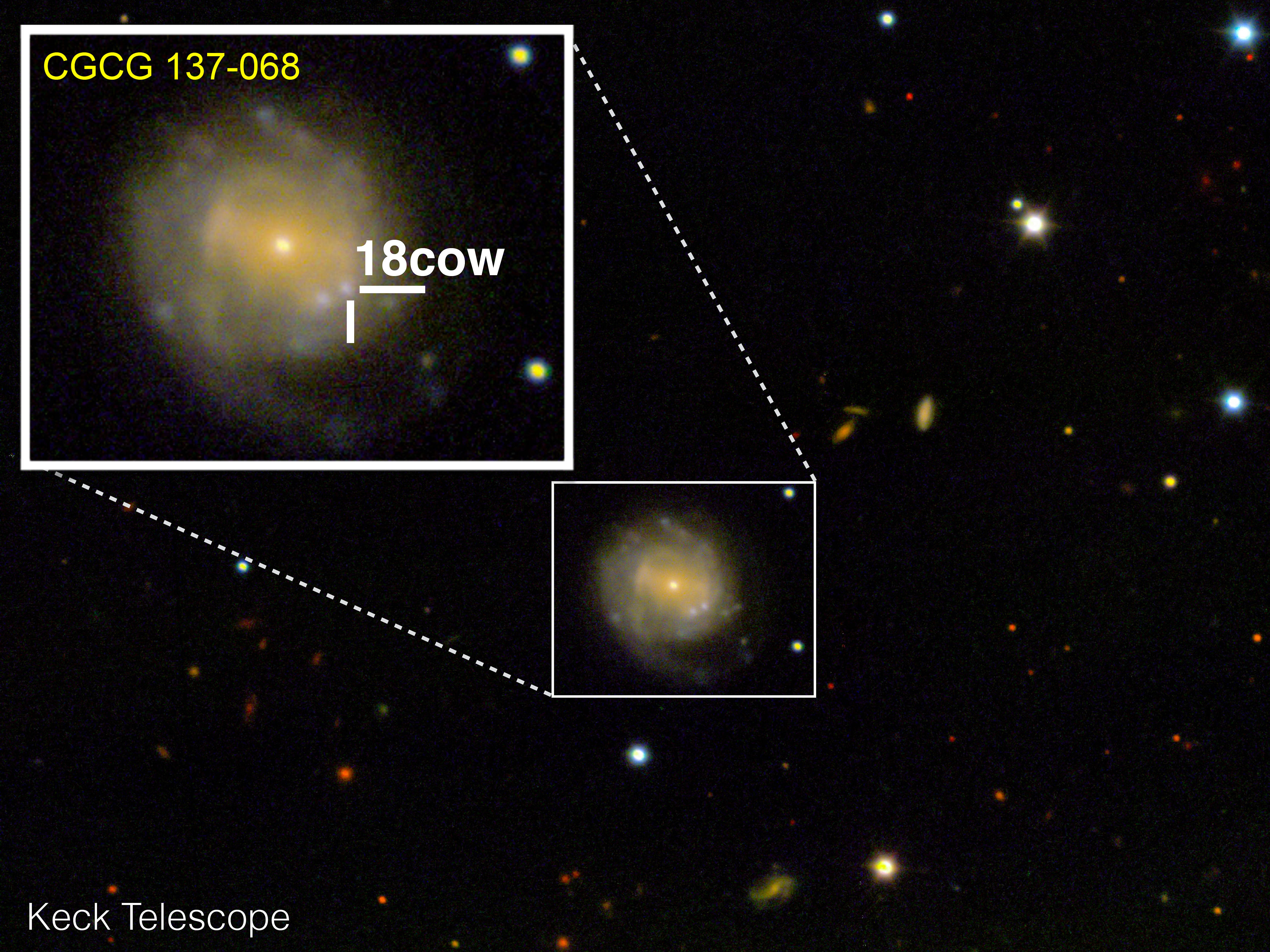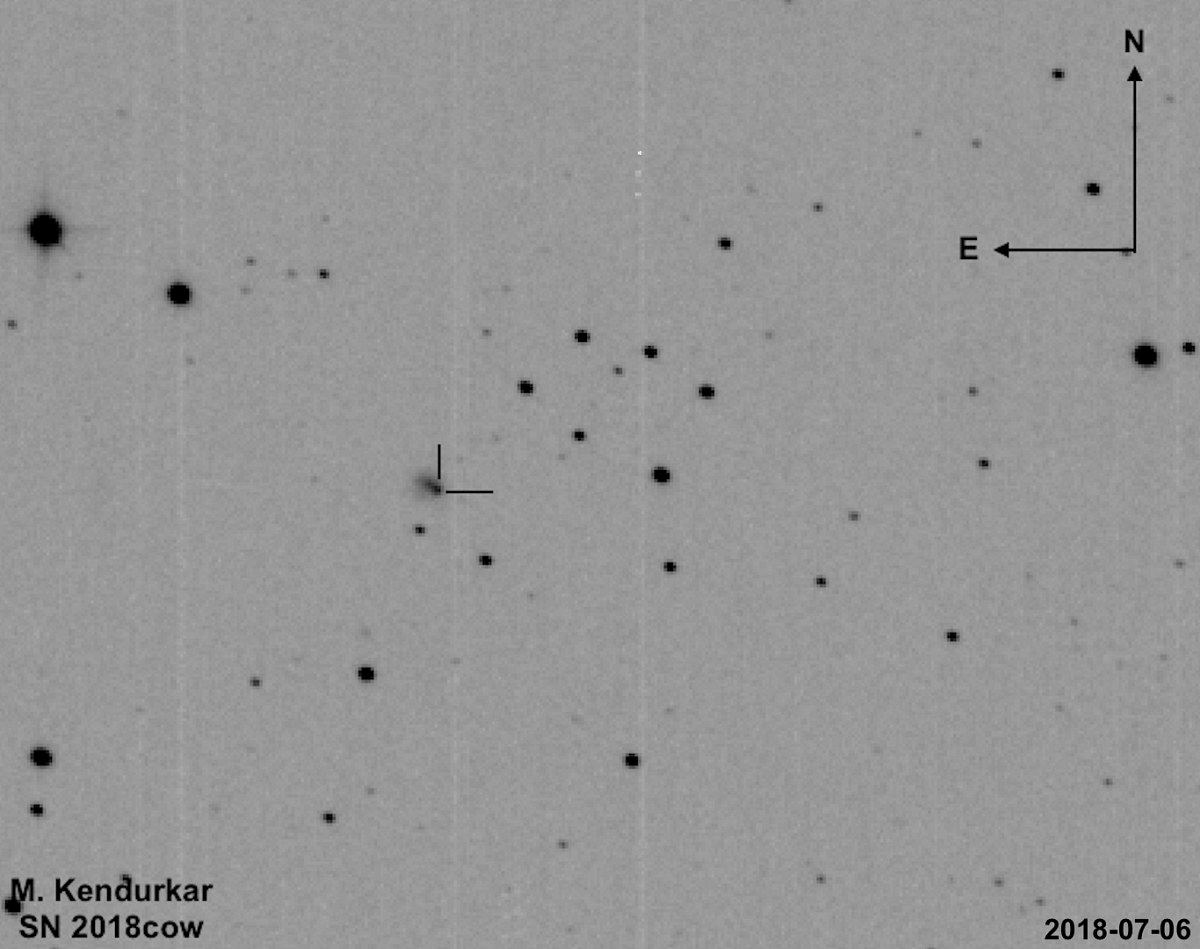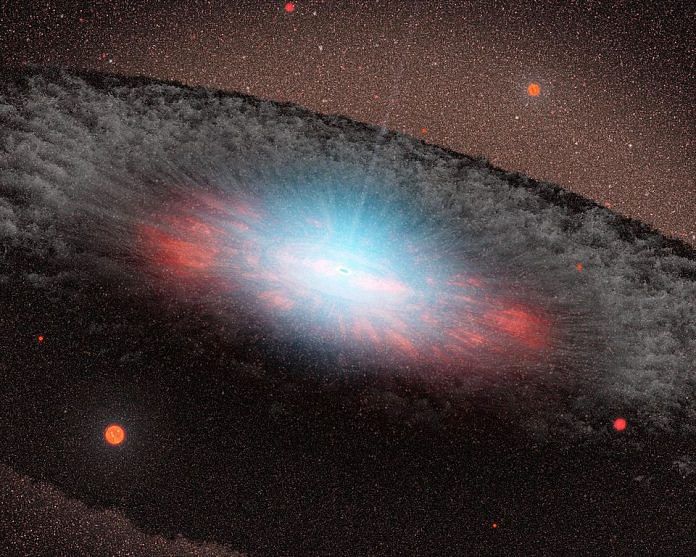Scientists may have just captured the birth of the objects left behind when a star explodes.
Bengaluru: Is it the birth of a neutron star, or a black hole? Whichever of these it is, astrophysicists around the world are excited.
A team led by the Northwestern University, US, has, for the first time ever, captured the birth of a ‘compact object’, the entity left behind after a star explodes in a phenomenon called supernova.
The object first caught researchers’ eyes when it burst into the northern sky in the summer of 2018 as a bright object.
Scientists used telescopes operating on different parts of the spectrum, such as visible light, x-rays and radio waves, to narrow down the point in time when a giant star collapsed to form the compact object.
The mysterious burst of light was recorded back in June and nicknamed ‘The Cow’.
Its official name is Supernova (SN) 2018cow, though it is known more commonly as AT2018cow — AT stands for the ATLAS telescopes through which it was first spotted, and ‘cow’ is coincidental, stemming from the alphabetical naming convention for supernovae.
The word cow itself is coincidental, stemming from an alphabetical mechanism to name astronomical phenomena.

While typical supernovae start to brighten gradually, AT2018cow became unnaturally bright almost overnight, simply appearing in the sky without warning.
It is estimated to be 200 million light years away, which is considered close in intergalactic terms.
AT2018cow was discovered by Stephen Smartt, an astronomer at Queen’s University Belfast, UK, who immediately sent out an alert through Astronomer’s Telegram, a service for reporting and discussing new astronomical observations.
Watching the fantastic rate at which the event was growing in brightness, astrophysicists across the world started requesting for telescopes to focus on it.
Nearly immediately, people guessed that this appeared to be a black hole that was ripping a star apart.
Also read: Astronomers spot flares travelling at 30% the speed of light outside Milky Way black hole
Compact objects
Supernovae are ‘transient events’, and not permanent bodies.
A star reaches its last stage of life, collapses in a tremendous explosion — the supernova — and then forms a remnant or compact object, which can be one of three bodies, white dwarfs, neutron stars, or black holes.
All compact objects have extremely high mass and density, with a relatively smaller radius and size. This gives them immense amounts of gravity. Famously, even light cannot escape the gravitational pull of black holes.
Unless they are decaying by giving off material into space, compact objects can visually remain in the skies forever. Black holes are theorised to eventually evaporate from radiation after trillions of years.
White dwarfs are formed when a type of star called ‘main sequence’ star — the Sun is an example — cools down after burning all the fuel in their core.
As a main sequence star cools, it will become redder, dim down, and expand to several times its size.
It will eventually shed its outer layers into space and be left only with the core, now a white dwarf. Even though this would be much smaller in size to the Sun, it will have just as much mass.
If a star’s mass is beyond the Chandrasekhar limit, which is 1.4 times the mass of our Sun, it will collapse into itself as, eventually, the core’s energy being given out will be overpowered by its gravitational self-attraction.
The top layers of the star will come crashing down into its core, and cause the body to implode. The remnant will then be a neutron star, which would have a radius of just 10-20 km, within which all that mass is concentrated.
Black holes are formed similarly, in a two-step process, when the original star’s mass is more than 20 times that of our Sun. The first remnant is a neutron star, which is still too massive to be stable (three to four times the solar mass). This then collapses again, forming a black hole.
As these compact objects accrete material, charged particles are pulled in too. These particles can be seen in the radio spectrum as they exit one body and enter the gravitational field of the other.
The Atacama Large Millimetre/submillimetre Array (ALMA) in the Chilean Andes captured this information in June.
The Cow
The event in question was first seen on 16 June 2018, through one of the two Asteroid Terrestrial-impact Last Alert System (ATLAS) telescopes in Hawaii. It was recorded to be nearly 100 times brighter than a typical supernova.
Within six days, the interest around this unusual event had grown so much that 24 telescopes were looking at it.
On 27 June, 35 giant telescopes were watching the event, creating a record for the largest number of concurrent observations ever.
“We knew right away that this source went from inactive to peak luminosity within just a few days,” said Raffaella Margutti, who headed the research, in a press statement.
“That was enough to get everybody excited because it was so unusual and, by astronomical standards, it was very close by.”

ALMA data revealed that the matter transfer was happening at nearly one-tenth the speed of light, at 30,000 km per second, and lasted for several weeks, prompting the observing team to conclude that this extremely rare event was the first capture of material by a black hole or a spinning neutron star.
Margutti’s team continued studying the event even after it faded, by looking at it through X-ray, gamma ray and radio telescopes. It turns out that AT2018cow is ‘naked’.
Normally, because such bodies are dragging in material wildly all around them, they are enveloped in a cloud, preventing us from seeing what’s inside. This isn’t the case with AT2018cow, which seems to have nearly 10 times less material swirling around.
“A ‘lightbulb’ was sitting deep inside the ejecta of the explosion,” Margutti said. “It would have been hard to see this in a normal stellar explosion. But The Cow had very little ejecta mass, which allowed us to view the central engine’s radiation directly.”
“And because of the event’s relative closeness at 200 million light years, we were able to see it more clearly,” he added.
“This is the closest transient object of this kind that we have ever found,” Margutti said.
Also read: Black hole 26,000 light years from us proves Albert Einstein’s theory right



